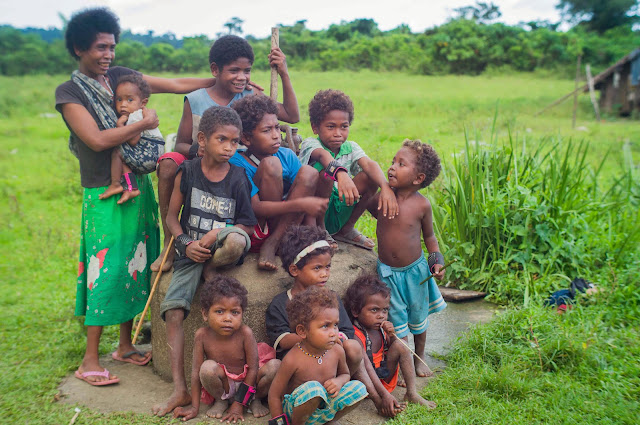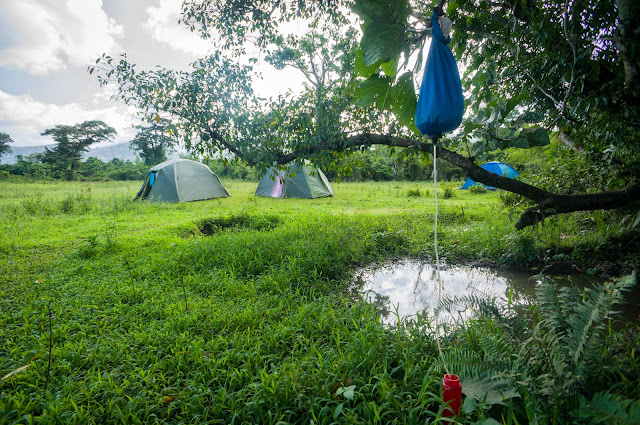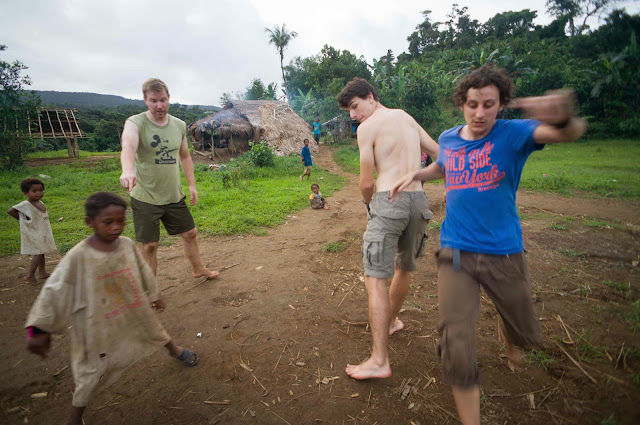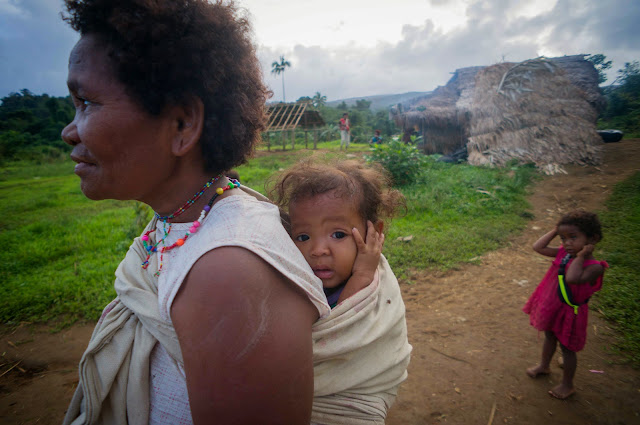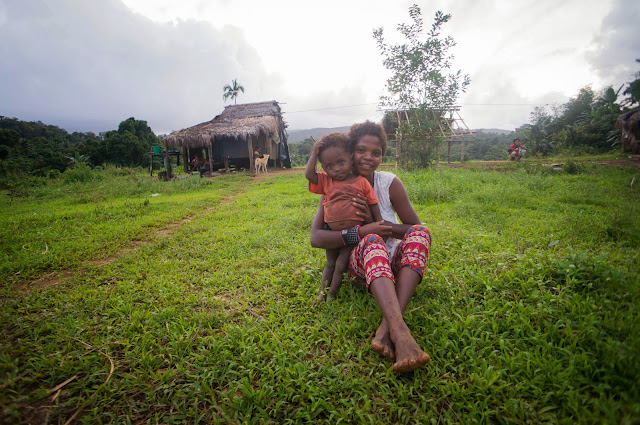Wednesday 4 June 2014
Tech Corner: all about power
Camp: Dinipan
After the first two camps, and during the 6th week of this story we were off for a holiday as my mother came for a grand tour of the Philippinnes during an intense 16 days trip which saw us going from volcanos to paradisiac islands and ending in the mountains. This will be told in a video I will make when a powerfull PC is available.
After these three weeks we return to lovely Palanan and ready for the next adventure, Dinipan. Dinipan is situated about 15 kilometers south of the town and is peculiar in the fact that it is the only place we heard of Agta owning land. This represents about 7 hectares of rice fields which they were busy harvesting during our visit. Most adults were there from dawn to 3 in the afternoon away getting the crops needed for the rest of the year, especially during the moonsoon time.
Luckily this didn't mean we lacked activities or adventures. Many times we were invited by kids to participate in the array of games they played. Also one of our interpreters was not available so we employed a girl from the local univestiy, ISU, who was very eager to spent time with the kids. So we had myriad of games to learn and experiment with.
On day 5 we had a bit of a scare. As we were casually sitting around a house at coffee time Jomar, the chief of the village, said he had to shared some important news with us. As a matter of a fact he had heard some distressing news from several people when he was in the south a few days back. Jomar explained that an argument occured in a camp about two hours to the south and as a result two westerners and several agta families were shot dead. The grieving families were now seeking revenge, headhunter style, meaning going to any nearby camp to reclaim the lives of lost kin. This tradition was still alive until the 1910s or so and we were told it is practised in a place such as palanan due to it's remoteness and seclusion, remember no roads to get there. So what do we do? The interpreters looked a tad white and suggested a swift trip to town to find out more. We needed more info. So off we go into the small forest leading to the nearby village to enquire with it's captain. No sign of weapons sticking out of the bushes and trees on the way but we are still on guard. The place looked busy, but only for the planning of the next fiesta, music and rum, due to happen in a few weeks. Fortunately they agree to gave us a few spare minutes. The captain asks us want we know at the present and listens carefully. Then, he sits back in its chair, as for taking a moment to think, and laughs. My friends I have heard of no such story. Our land is very peaceful and you are welcome to stay around as long as you want and join for the upcoming fiesta. He offers a round of coffee. Chou blanc. We decide to call our friends in town and make our way to the signal point. This refers to the few points where mobile phone signal is available. In fact with the distance and landscape the coverage of antennas gets very patchy so there are often dedicated 1 by 1m space for mobile phone use. In our case this is between two trees on the right side of the road just after the basketball court.
In town, one week later. We have heard 10 different stories about what happened in the south such as an arguement over fishing, or mining or some sort of misunderstanding. The one common point between all of them is the absence of headhtuners. It seems that contrary to exotic concepts of tribal warriors running amok (the phrase to run amok orginates from a pacific population in which temporary insanity led men to literally go on a killing spree, called an amok), even the remotest areas of the Philippinnes is safe. As for the conclusion of our story it
just may have been related to the fact that Jomar told the story and then left for 3 days. It seems it was an Agta style warning to ensure we behave well in the absence of the master. Sadly the Agta have been tricked many times by westerners coming to try and evicate them and tear up the land in the search of the precious, well in this case gold.
The last notable anecdote of camp number 3 takes place one night at around 2AM. The weather outside haven't been great for the day with heavy rain and a bit of wind. Abbey, half-asleep informs me the strong wind is engulfing the tent and forming air pockets under it. The tent is indeed moving a bit. A quarter of an hour later I awake again. This time something strange is happening. I can feel something lifting my mat and I quite effortlessly, like I sudently had the power to levitate. Light on and lets try to get it. The floor of the tent indeed is moved by a slow oscillation. As I put my hand on it to understand I finally get it. Water, about 10 centimerters of it as guess. As we step outside we get a picture of the situation: the water is above my ankle, it is time to get a move on. We put all our possession on the former mats, now safety rafts. Bags are packed up and off we go half naked in the pouring rain shifting 10 meters to the top of a micro hill, as opposite to the very bottom. The tent definitively works well as the only annoyance was the smell of damp we had for the following week, but hey this house can nearly swim!
This is it for now, the next episode will be about Caniapan, our first excursion to the ocean and it's white sand beaches.
Love to all,
Wasabi.
Camp: Djibut and Cemento
Édito: on the android version of blogger there isn't a way to organise photos and they appear at the end of articles so I will add the photos captions in the article itself.
11 of May.
We have now been gone for 80 days and are visiting our fourth camp near the ocean. We have been here for about 4 days and life here is very good. Our camp is on the beach and the Agta are very kind to us. This camp is pretty big so there is more things such as a volleyball and basketball court giving it a nice taste of holidays. Work is pretty intense though as there are more than 100 people living here in 19 houses. More about those two weeks in the future, today I would like to tell you about the inland camps.
The strip of land the Agta live on is squashed between the ocean and the Sierra Madre moutain range. This creates two main environments; the foothills and rivers, and the shore. So far, the three camps we visited are situated at the end of the rice fields of surrounding villages and just before the moutains. This allows the Agta, to have good access to their hunting and gathering spots, as well as being close to farmers in order to trade goods or occasionally help in the field in the form of cash labor.
Djibut-
Our first stop was a small camp of 6 houses where the Agta live in the middle of the rice fields. In fact, they have an agreement with locals where they take care of the surrounding fields in exchange for 50% of the rice harvest. The first contact with the Agta was quite strange as many of the Amerikano, i.e. strangers, coming here, do so for mining as a rumor is circulating that the moutains contain minerals such as gold. Anyway, the Agta didn't really know what to make of us at first, although they warmed to us after a couple of days. I guess, with hindsight, it takes a day or two to be accepted and not only seen as an attraction. Many kids are seeing puti, white people, for the first time. Not much other than our work happened that week as it was still the rainy season - at some point we had to stay 2 days and a half in the tent waiting for the weather to improve.
Cemento-
Twenty minutes walk from Djibut is Cemento. During our stay in the former place, many Agta coming to visit were asking us when we would come to stay with them. We went there on week 4 as the rain was still very strong and the first attempt we made to reach the place failed. For information, the camp is an 1h30 walk and the main hurdles are mud and a big river. Our second attempt was quite an adventure. After finding people to help carry the food for the week, we set on the trail and arrived to the river. It was very big and we couldn't directly cross. We knew a boat man was living nearby and was usually available if one can scream loudly enough for him to hear the call. After 15 minutes of calling, we were now maybe 20 on the river bank and no sign of the banka, boat. Looking for a possible solution to cross without getting the equipment wet, we found after an hour a place in the north where the river was much wider and deeper. This helped a lot as the main issue was not the height, but the strength of the current. In fact, even a meter of water is enough to be dragged and to fall into the water where it is quite hard to get back on your feet, which means having to swim and getting everything wet. And also some of the fellows in our group do not swim. Just in time, the boat man appeared as we were already in deep water. With his help, we were back on track. At about 4PM, 2 hours before the night we arrived to Cemento, or rather, in front of it. In fact, the camp lies just on the border of the second river, and we had to cross it. Once again, the usual boat as nowhere to be found, and as the night was coming upon us we wondered what to do. This is the point where it got a bit messy as the porters wanted to go home to attend their cattle, our tents were still in the first camp waiting to be moved, and the boat was still missing. After spliting the team and quite a lot of misundertstandings, we ending up with the porters finding the boat, part of the team crossing the muddy jungle at night to get stuff from the other camp, and the athlete and your narrator crossing the river twice more to get some tents which ended up half soaked. Even a small and charming looking river can be secretly tricky! Nevertheless, we had arrived and the fire was going strong.
The rest of the week was really fun. Everyone was happy to have us around. We brought a volleyball, that pleased the kids and adults alike. One evening, I told them about football and we had a good game. The result was a small pitch with 2 rows of 10 people furiously shooting the ball at each other trying to break the lines of the opponents, and score between the banana leaves marking the goal. Even mums with babies on their backs took part in the fun.
We left the camp a feeling a bit sad, like a holiday cut short, and promising to come back to say hello in the summer months.
Photos:
1. Agta houses in Djibut
2. Group picture at the end our stay in the first camp.
3. Football game in Cemento
4. Arcelli and Marianne.
5. Juliet and Jan-Paul in Cemento.
Love to all,
Wasabi.
Anthropology corner: What do I do?

 |
| Wallace with the headphones in. One beep in 30s for 400h in total |



